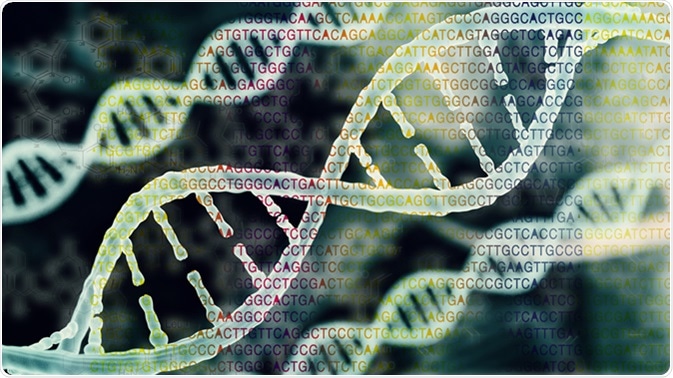ChIP-seq, short for chromatin immunoprecipitation sequencing, combines chromatin immunoprecipitation with real-time next generation sequencing to identify genomic binding sites that proteins such as transcription factors associate with. It is a powerful tool to explore protein−DNA interactions and the regulation of genetic events in diseases and biological pathways.

Image Credit: CI Photos / Shutterstock
The ChIP-seq procedure involves cross-linking proteins to their bound DNA through fixation with formaldehyde. Cells are then homogenized, DNA is sheared, and a protein-specific antibody is used to isolate the fragments of DNA (immunoprecipitation) that associate with the protein of interest. The immunoprecipitated DNA is then amplified and fragments of 200 to 300bp are selected for next-generation sequencing and the analysis of DNA binding sites.
StatQuest: A gentle introduction to ChIP-Seq
Identification of Transcription Binding Sites in the Genome
The main role of a transcription factor is to associate with a specific genomic site and recruit cofactors needed for the regulation of the transcription process. The initial step in this process is the binding of transcription factor to a specific DNA segment. Using ChIP-seq, researchers can identify these transcription factor binding sites across the entire genome. Both specific regulatory sites and direct downstream targets of proteins can be determined for any transcription factor. Researchers can also assess any transcription-regulatory proteins that form clusters at particular sites in the genome.
What has been Achieved by Applying ChIP-seq?
One important application of ChIP Seq has been the discovery of new regulatory elements. For example, analysis of DNA binding sites in the mouse brain has led to the identification of new tissue-specific regulatpry areas (enhancers) of genes.
Analyses of histone modifications have provided insights on how the genome is organized and the functional domains across the entire genome which has enabled scientists to predict and validate an array of large, non-coding RNAs.
Probably the most important achievement of ChIP-Seq is the population-level analysis of interactions between protein and DNA. This has enabled researchers to understand how transcription factors regulate genes based on the degeneracy of the binding site motif which the protein recognizes, presence of other transcription factors in the same location, and the distance of transcription factor from the transcription start site. Often, the mechanism a transcription factor uses is specific to each individual binding site. Some principles of higher function can only be elucidated by performing genome-wide analysis of all existing binding sites.
For example, a study that used ChIP-seq to profile transcription factors in embryonic stem cells demonstrated that the regulatory elements are arranged into “enhanceosomes.” This enabled scientists to understand the roles of transcription factors during embryonic stem cell differentiation.
A modified version of ChIP-seq has also been used to identify the entire range of chromatin interactions that can occur between estrogen receptor binding sites. This provided a 3D map of chromatin interaction that led researchers to propose that the topology of DNA may be a key contributor in the regulation of transcription.